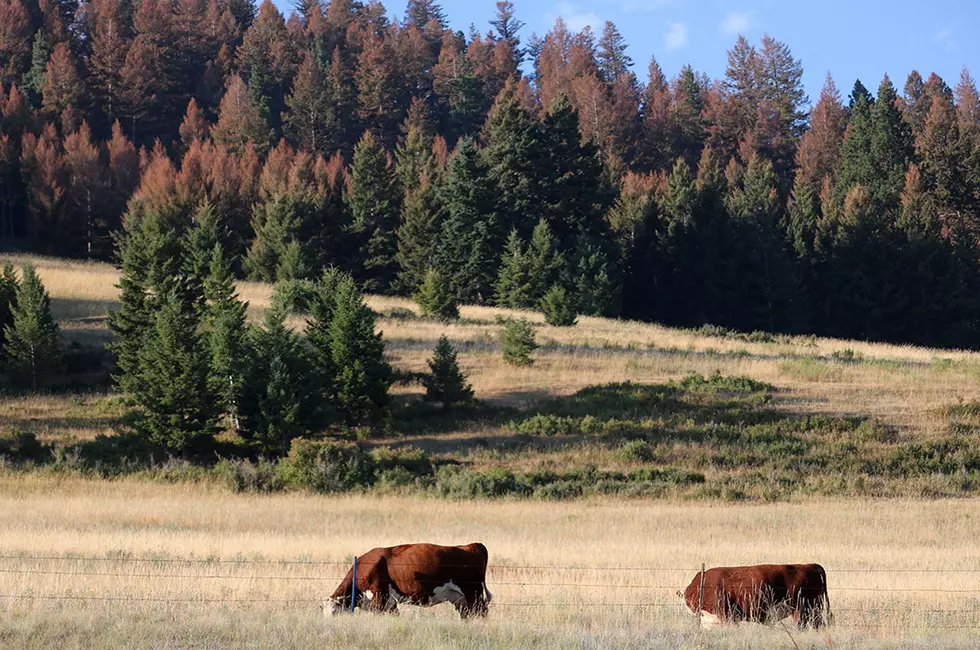
Collaborative forestry plan rewarded with $5 million to implement projects
A governor’s advisory council has completed more than a year’s work on a collaborative forest plan for Montana, but council members are worried the new administration might ignore it.
On Thursday, the 21 members of the Forest Action Advisory Council voted unanimously to approve the final draft of their Forest Action Plan and send it to Gov. Steve Bullock for his signature.
They took that action a day after learning that Bullock planned to dedicate $4.5 million from the Montana fire suppression account to go to projects that can get the plan off the ground. That’s an increase over the $1.5 million that Bullock originally promised.
The addition of a $500,000 U.S. Forest Service grant means $5 million will be available to groups, agencies or local governments to put projects on the ground.
“Your work with this Forest Action Plan does form an important first step in ensuring that we marshal the resources and the partnerships necessary to build resiliency and support the many benefits our forests provide,” Bullock said. “But all compliments aside, I know the best tribute I can offer your work is a genuine commitment to ensuring that we actually start making sure this work gets implemented.”
The Forest Action Plan is Montana’s strategy for working at a landscape scale across different jurisdictions to reduce wildland fire risk and aid the state economy through timber jobs. After reviewing an assessment of statewide forest conditions last year, the council this year identified priority areas of the state for forest management and developed an implementation plan.
To create priority areas, the council looked at maps and data showing the wildland-urban interface, areas already burned by recent fires, those with higher risk of wildfire and stands that have been infested with insects or disease. Forests with more disease or wildfire risk that are closer to human habitation are higher priority.
The plan could be fairly successful because it was developed by a diverse group of Montanans. Timber company executives and commissioners of forested counties met with wilderness and wildlife advocates and public land hunters. Some might prefer to log more while others would want more prescribed burns. But although the council members each prioritize different aspects of a forest, they still hammered together a plan they could all support.
“Working together really is the key to our success,” Bullock told them. “You all deserve a tremendous amount of credit for bucking the trends of an otherwise hostile political environment, for maintaining genuine commitments to back one another and the goals that we all share in common.”
The group had managed to develop good relations in meetings prior to the pandemic, but their final official meeting Thursday had to be on Zoom. So a bit of shared applause was all they could do to celebrate their accomplishment.
Many of the group thanked Bullock for bringing diverse stakeholders together, investing in collaborative solutions and working with the federal government to get money and support for Montana forestry projects.
Lincoln County Commissioner Mark Peck said he appreciated Bullock’s leadership in forest management.
“It wasn’t a politically convenient thing for you to do, and I want to give you credit where credit is due,” Peck said. “I think you’ve really moved the ball towards modern forest management.”
Knowing that Bullock won’t be around next year to defend the plan, some council members asked how they could make sure the plan doesn’t end up just sitting on a shelf. Bullock said the council members need to stand together.
“If you speak with a unified voice, that’s how you can make enduring and systemic change,” Bullock said. “Durable change requires a level of trust among a group like this. To say that we all want our individual interests advanced, but if we turn around and do that at the expense of the greater group, those advancements are going to be fleeting.”
The collaborative nature of the plan was backed by more than 70 public comments submitted to the council that were mostly in support, said Sonya Germann, Natural Resources Conservation Service Forestry Division Administrator.
“We didn’t see any major, substantive changes warranted based on those comments. But the work of the core team did was to distill that information and use those comments to make the content even stronger than it is,” Germann said.
Once Bullock signs off on the plan, it will go to U.S. Forest Service Region 1 Forester Leanne Martin for her approval and on up to the national headquarters. Other states are also submitting plans, so it could take two to three weeks before Montana’s plan gets final approval.
Nine members of the council will stay on as an implementation team to dole out the funding to projects that meet the requirements and expectations of the plan. If the new administration decides not to provide more funding, the implementation team will disband.
The council doesn’t want that to happen. So on Thursday, they decided to be proactive and draft a letter to the Gianforte administration, encouraging support for the plan.
“It’s more than politics – it’s work we want to get done,” said Jeff Schmidt, manager of Red Lodge Mountain. “Regardless of who’s in charge, the forest needs some help and some work, and that’s us.”
Contact reporter Laura Lundquist at lundquist@missoulacurrent.com.
